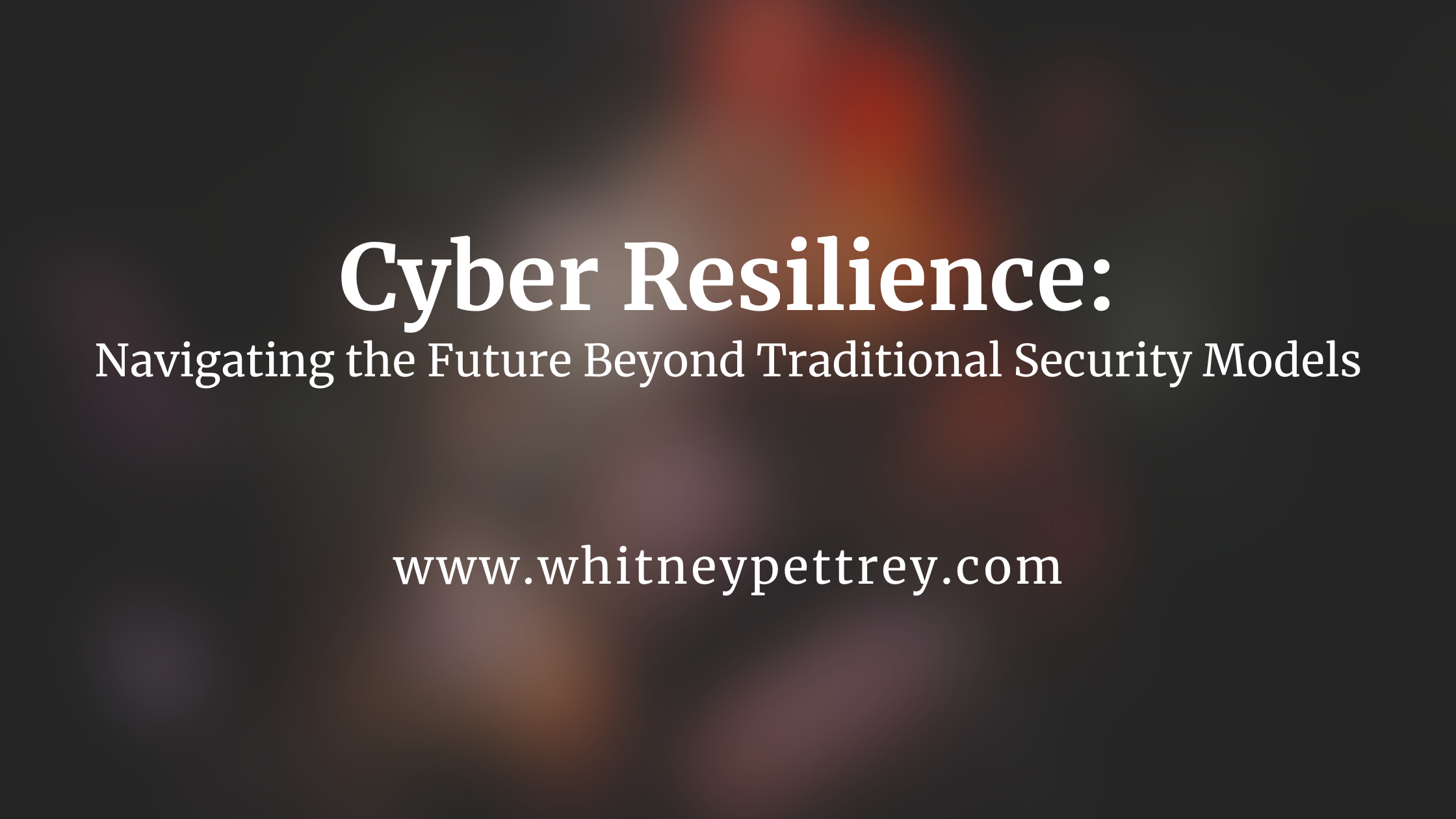The evolving digital landscape demands more than just innovation—it demands resilience. As we move past edge and fog computing, the complexities of modern cybersecurity are outgrowing the traditional frameworks that once kept us secure. In this new era, where networks are dispersed, data is everywhere, and threats are increasingly sophisticated, we need to think beyond simple protection. We must embrace a future built on resilience—an adaptive approach that secures and empowers organizations to thrive amid continuous change.
The Reality of Cyber Resilience in a Distributed World
With edge and fog computing, we moved from centralized data hubs to a more distributed way of processing information. The aim was to bring data processing closer to where it was generated, reducing latency and enabling real-time decision-making for applications like smart infrastructure and industrial IoT. However, the limitations of these approaches are becoming evident as technology continues to advance. The future is not only about building distributed systems but also about ensuring those systems are resilient by design.
Challenges Facing the New Age of Cybersecurity
- Expanded Attack Surface: The shift to distributed architectures has led to an explosion in the number of endpoints—each an opportunity for malicious actors. Traditional centralized security approaches simply can’t cope with the sheer volume and diversity of these endpoints. To meet this challenge, organizations must shift toward architectures that secure each node autonomously, making every endpoint a line of defense rather than a point of vulnerability.
- Autonomous Systems and Operational Continuity: With the rise of autonomous technologies—ranging from industrial automation to critical infrastructure—ensuring operational continuity under threat is crucial. Security needs to be embedded at the very core of these autonomous operations, guaranteeing that even if an attack is successful, systems can continue functioning safely without exposing sensitive data or compromising essential services.
- Adaptive Threat Detection: A static approach to threat detection is no longer viable in the face of adaptive and sophisticated cyber threats. AI and machine learning are needed to continuously analyze patterns, detect anomalies, and implement countermeasures instantly. This level of proactive threat detection is critical in preventing potential breaches from escalating into widespread incidents.
Redefining Security: Moving Toward Cyber Resilience
The future of cybersecurity is not about building higher walls—it’s about creating adaptive, resilient systems that can withstand, adapt, and recover from attacks. To achieve this, we need to rethink how we design security architectures:
- Distributed, Decentralized Security: Instead of relying on a centralized security hub, a decentralized approach ensures that security mechanisms are embedded throughout the network. This means that each part of the system can function independently and continue to secure operations even in the face of partial compromise. It’s a model built on autonomy and redundancy, ensuring no single failure can bring down the network.
- Autonomous Response and Remediation: In a world where cyberattacks evolve in milliseconds, relying solely on human intervention is insufficient. Autonomous response systems, empowered by machine learning, enable immediate action when a threat is detected—isolating compromised segments, reconfiguring access controls, and alerting security teams without delay. This is resilience in action, where the system itself becomes the first line of response.
- Regulatory Evolution and Compliance in a Dynamic World: As technology becomes more distributed, regulatory frameworks must also evolve. This is not just about compliance but about setting new standards for security in a decentralized context—ensuring data integrity, protecting privacy, and fostering a secure digital environment that adapts to regulatory demands without hindering innovation.
Case Study: Building Resilient Industrial Systems
Consider a multinational manufacturer with facilities across the globe. The challenge: securing industrial IoT (IIoT) networks that spanned thousands of devices and sensors, all critical to maintaining continuous production. By shifting to a decentralized security model, the manufacturer empowered each facility to operate autonomously, with localized security controls capable of detecting and neutralizing threats in real-time.
Continuous visibility into device behavior, combined with automated responses, ensured that any potential compromise was isolated before it could impact the broader network. This approach minimized disruptions, preserved operational continuity, and built a security framework that was both scalable and inherently resilient—capable of adapting to new threats as they emerged.
Cyber Resilience: The True Evolution of Security
As we move beyond edge and fog computing, the future of cybersecurity lies not in preventing every possible attack but in building systems that are resilient enough to withstand them. Cyber resilience ensures that organizations can operate even under threat—maintaining critical functions, protecting sensitive data, and recovering quickly from incidents.
- Proactive Defense and Stress Testing: A key aspect of resilience is continuous preparation. Organizations must stress-test their systems, use predictive analytics to identify weak points before they are exploited, and build redundancies that ensure continuity even when attacks are successful. It’s about understanding that cyber threats are inevitable, but disruption doesn’t have to be.
- Integrating Security with Business Continuity: Cyber resilience must be seen not just as a technical challenge but as a core aspect of business continuity. By aligning security strategies with broader organizational goals, enterprises can ensure that their growth and innovation are supported by an unyielding security foundation—one that adapts as the business evolves.
Conclusion: Embracing Resilience as a Competitive Advantage
The digital landscape is changing, and with it, our approach to security must change too. The path forward is not about creating impenetrable defenses; it’s about ensuring that, even in the face of attacks, systems continue to operate, adapt, and recover. By embracing decentralized security models, autonomous threat response, and proactive resilience strategies, organizations can build a foundation that not only supports but also accelerates innovation.
Resilience is the next frontier. It’s the bridge between today’s cybersecurity challenges and tomorrow’s opportunities. By building systems that are secure by design and resilient by nature, we are not just protecting against the threats of the future—we are laying the groundwork for a digital world where progress is unimpeded, and security is a given.
